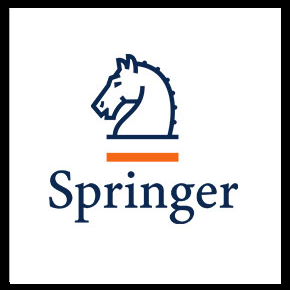دانلود رایگان مقاله حداکثر رساندن کمک های مالی – سال 2019


مشخصات مقاله:
عنوان فارسی مقاله:
به حداکثر رساندن کمک های مالی با کدامیک: کمک مالی به عنوان یک انگیزه یا انگیزه ها برای کمک مالی به خیریه؟
عنوان انگلیسی مقاله:
Which maximizes donations: Charitable giving as an incentive or incentives for charitable giving?
کلمات کلیدی مقاله:
کمک مالی، صدقه دادن، کمک مالی به عنوان هدیه، مدل فرایند دوگانه، اثر صدور مجوز، اثر فراوانی
مناسب برای رشته های دانشگاهی زیر:
مدیریت
مناسب برای گرایش های دانشگاهی زیر:
مدیریت مالی
وضعیت مقاله انگلیسی و ترجمه:
مقاله انگلیسی را میتوانید به صورت رایگان با فرمت PDF با کلیک بر روی دکمه آبی، دانلود نمایید. برای ثبت سفارش ترجمه نیز روی دکلمه قرمز رنگ کلیک نمایید. سفارش ترجمه نیازمند زمان بوده و ترجمه این مقاله آماده نمیباشد و پس از اتمام ترجمه، فایل ورد تایپ شده قابل دانلود خواهد بود.
فهرست مطالب:
Outline
Abstract
Keywords
۱٫ Introduction
۲٫ Literature review
۳٫ Methodology
۴٫ Empirical implications and future studies
Funding
Ethical approval
Informed consent
References
قسمتی از مقاله انگلیسی:
Abstract
With charitable donations becoming a conventional norm, companies may choose to donate their products to improve public image and increase product visibility. Using two donation types (donation-for-gift/charity sale) and two product types (hedonic/utilitarian), this research discusses how charities should frame product-for-money activities toward enhancing compliance and re-donation intentions upon receiving product donations. Two 2 (donation types) by 2 (product types) between-subject experiments are conducted in college campus cafeterias. The first study uses an inspiring cause while the second study provides a scenario designed to evoke sympathy. Results show that donation-for-gift garners higher donation intentions compared to charity sale, as explained by the dual-process model. It is also revealed that product type moderates the influence of donation type on donation intention only when a sympathetic appeal is used. The fitting issue between product type and cause appeal, along with the licensing effect are presented to explain this finding.
1. Introduction
In recent years, prosocial activities have been gaining attention from companies alongside the growing importance of recognition as a socially responsible firm (Bhattacharya, Smith, & Vogel, 2004; Chang & Cheng, 2015; Lichtenstein, Drumwright, & Braig, 2004; Saiia, Carroll, & Buchholtz, 2003; Strahilevitz & Myers, 1998; Wymer, McDonald, & Scaife, 2013; Wymer & Samu, 2003). There are different ways for a company to make prosocial contributions. Many prefer a monetary donation, as it is simple and straightforward. Some choose to engage employees in prosocial activities such as beach cleaning. Others may choose to bundle their products with fundraisers (Strahilevitz & Myers, 1998). The act of companies donating part of their revenue from the sales of one or more of their products toward a cause is called transaction-based promotions or cause-related marketing (CRM) (Bhargave, Chakravarti, & Guha, 2015; Chang, 2008; Chang & Cheng, 2015; Lichtenstein et al., 2004; Strahilevitz, 1999; Varadarajan & Menon, 1988). Corporations participating in CRM can benefit not only from presenting favorable images of themselves to customers but also increasing product visibility and sales (Chang, 2008; Chang & Cheng, 2015; Lichtenstein et al., 2004; Saxton, 1998; Strahilevitz, 1999). Donating products to charities can be treated as a special form of CRM in that it contributes all, instead of a fraction, of the revenue to charities.


